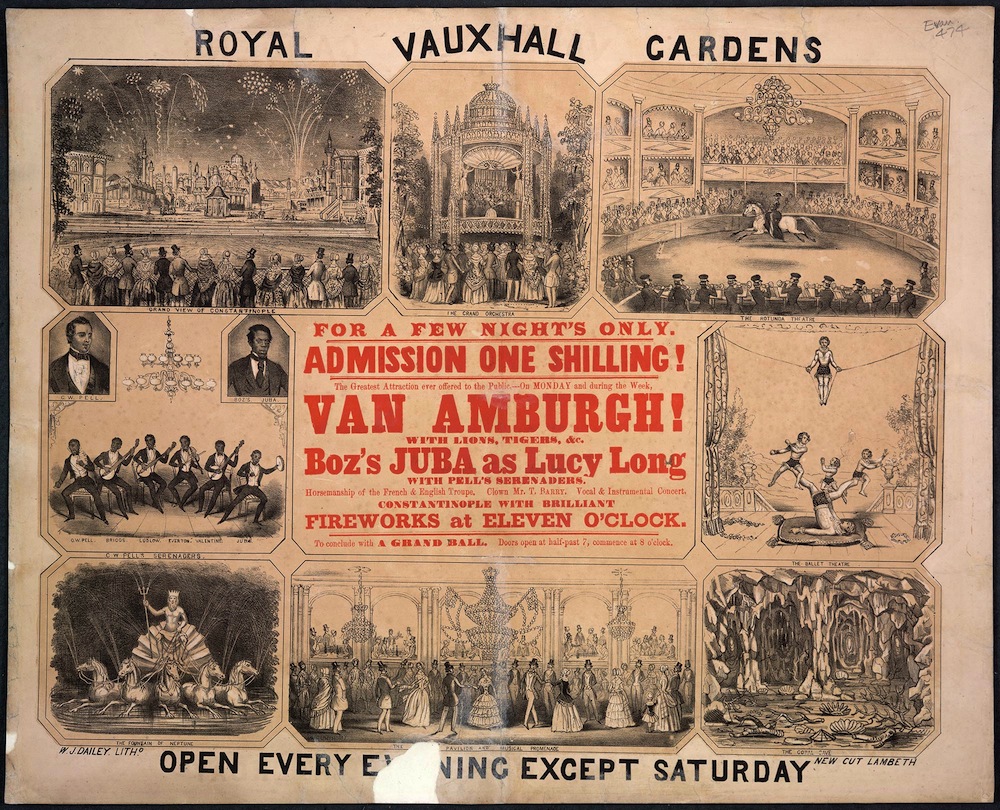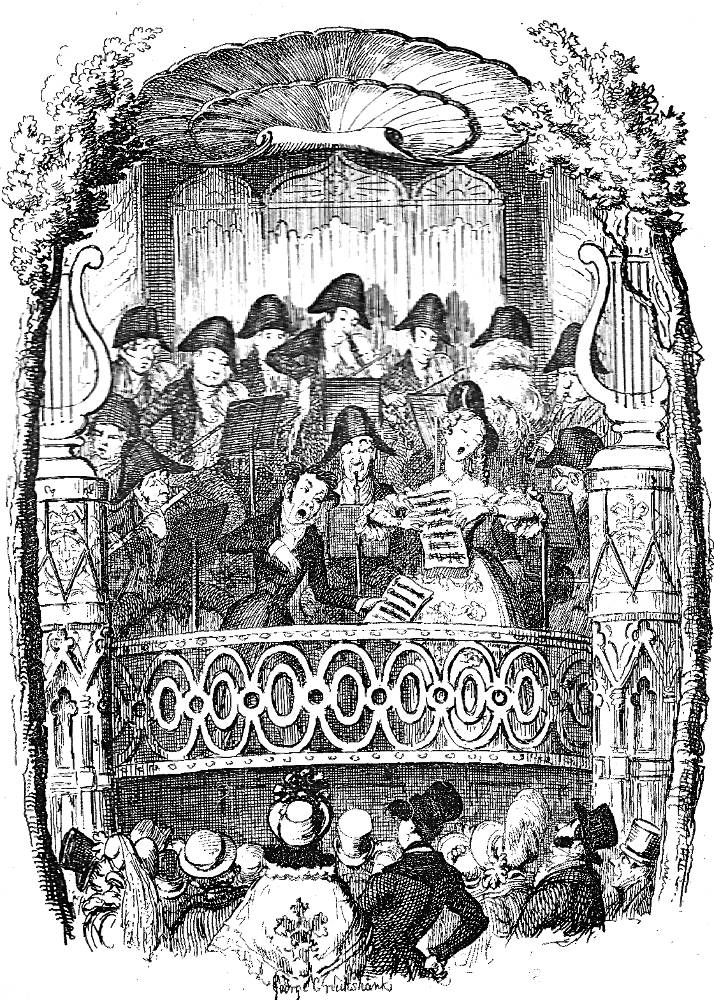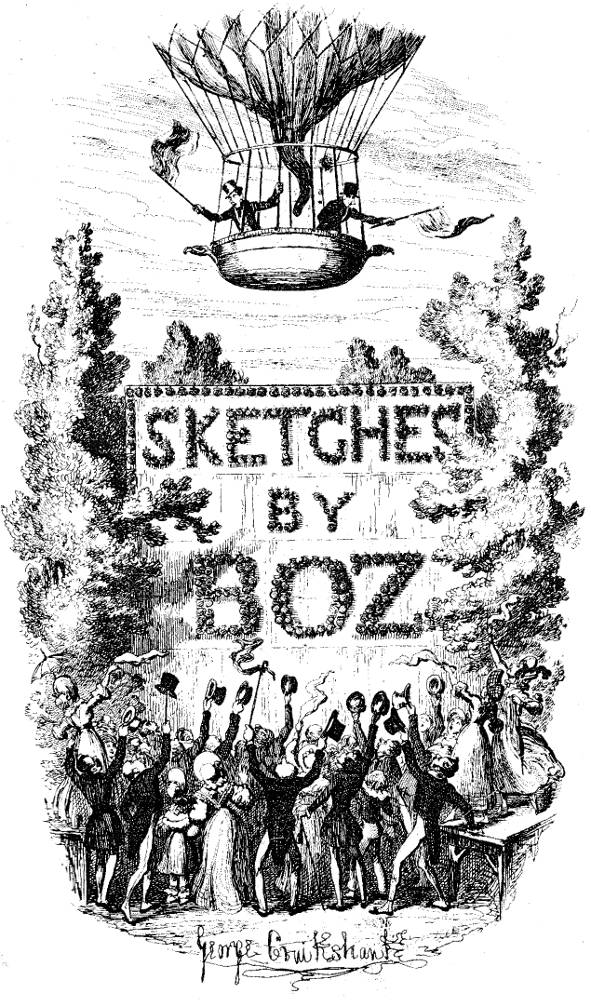Yesterday evening I went for the first time to Vauxhall, a public garden in the style of Tivoli at Paris, but on a far grander and more brilliant scale. The illumination with thousands of lamps of the most dazzlingcolours is uncommonly splendid. Especially beautiful were large bouquets of flowers hung in the trees, formed of red, blue, yellow, and violet lamps, and the leaves and stalks of green; there were also chandeliers of a gay Turkish sort of pattern of various hues, and a temple for the music, surmounted with the royal arms and crest. Several triumphal arches were not of wood, but of cast-iron, of light transparent patterns, infinitely more elegant, and quite as rich as the former. Beyond this the gardens extended with all their variety and their exhibitions, the most remarkable of which was the battle of Waterloo. — Prince Herman Ludwig Pückler-Muskau after a visit in 1827 to see a re-enactment of the Battle of Waterloo. — quoted in the blog Jane Austen’s World (see below).

"Royal Vauxhall Gardens. Estimated date, 1841. British Library shelfmark: Evan. 474 (in public domain). [Click on the image to enlarge it and for additional information.]
From the mid-seventeenth through the mid-nineteenth century Vauxhall Gardens (originally, New Spring Gardens) offered Londoners of the middle and upper classes lavish buffets, drink, music, and fireworks in a park-like setting. In 1785, when the site was re-named Vauxhall Gardens, a modest admission price was imposed. Originally, Vauxhall on the south bank of the Thames at Kennington was accessible for Londoners only by ferry, but the completion of the Vauxhall Bridge in 1816 opened the gardens up to a host of new potential customers (it is mentioned in the sketch entitled "The River," as well as in the Christmas story "Somebody's Luggage," and the late novel Our Mutual Friend). Although its many walks and pathways were ideally suited for romantic assignations, the enormous crowds were attracted by an array of spectacular entertainments, including tightrope walkers, hot-air balloon ascents, classical music concerts, and evening fireworks provided entertainment in the lamp-lit grounds. On 8 June 1817, the Gardens even staged a large-scale re-enactment of Battle of Waterloo, with 1,000 soldiers enacting the roles of the French and British armies, to mark the first anniversary of that momentous event. Changing tastes and a greater range of entertainment options, however, led to Vauxhall's decline. Although it closed in 1840 after its owners suffered bankruptcy, it re-opened in 1841, only to suffer permanent closure in 1859. 25 July was "Positively The Last Night Forever," after a season of just six nights from 18 July; demolition began the next day, and its architectural ornaments were placed on sale a month later. — “Vauxhall Gardens” from Jane Austen’s World, which has many illustrations of the park in the eighteenth century
Charles Dickens on Daytime Concerts at Vauxhall Gardens
A small party of dismal men in cocked hats were "executing" the overture to Tancredi, and a numerous assemblage of ladies and gentlemen, with their families, had rushed from their half-emptied stout mugs in the supper boxes, and crowded to the spot. Intense was the low murmur of admiration when a particularly small gentleman, in a dress coat, led on a particularly tall lady in a blue sarcenet pelisse and bonnet of the same, ornamented with large white feathers, and forthwith commenced a plaintive duet.
We knew the small gentleman well; we had seen a lithographed semblance of him, on many a piece of music, with his mouth wide open as if in the act of singing; a wine-glass in his hand; and a table with two decanters and four pine-apples on it in the background. The tall lady, too, we had gazed on, lost in raptures of admiration, many and many a time — how different people do look by daylight, and without punch, to be sure! It was a beautiful duet: first the small gentleman asked a question, and then the tall lady answered it; then the small gentleman and the tall lady sang together most melodiously; then the small gentleman went through a little piece of vehemence by himself, and got very tenor indeed, in the excitement of his feelings, to which the tall lady responded in a similar manner; then the small gentleman had a shake or two, after which the tall lady had the same, and then they both merged imperceptibly into the original air: and the band wound themselves up to a pitch of fury, and the small gentleman handed the tall lady out, and the applause was rapturous.
The comic singer, however, was the especial favourite; we really thought that a gentleman, with his dinner in a pocket-handkerchief, who stood near us, would have fainted with excess of joy. A marvellously facetious gentleman that comic singer is; his distinguishing characteristics are, a wig approaching to the flaxen, and an aged countenance, and he bears the name of one of the English counties, if we recollect right. He sang a very good song about the seven ages, the first half-hour of which afforded the assembly the purest delight; of the rest we can make no report, as we did not stay to hear any more. — "Scenes," Chapter 14, "Vauxhall Gardens by Day"
George Cruikshank’s Illustrations of the above passage from Sketches by Boz


Two features of daytime entertainments ay Vauxhall — concerts and hot-air balloon ascents.
Cruikshank directs the reader's attention to the heart of the essay, the operatic concert, featuring to the overture from Tancredi, a musical composition by Rossini based on Torquato Tasso's sixteenth-century epic poem Jerusalem Delivered. The Romantic overture should stir feelings of grandeur and awe in the auditors to prepare them for the heroic elements of passion, war, betrayal, loyalty, heart-break, loss and honour, involved in the romantic triangle between the epic hero, the pagan warrior-maiden Clorinda, and the Princess Erminia of Antioch. However, young Dickens, the observant reporter of the mundane made extraordinary, is far more interested in the comedy afforded by the singers than he is by the musical setting, finding a Mutt-and-Jeff humour in the contrasting appearances soloists. The "small gentleman in a dress coat" and the "tall lady" in a white-feathered bonnet do an expostulation-and-reply duet with a "vehemence" matched by the "fury" of the accompanying orchestra, terms that suggest Dickens's response to the tempestuous nature of Romantic music, but which are not characteristic of the somewhat wooden Cruikshank scene that initiates the reader into the daytime concert at Vauxhall. The audience in Cruikshank's plate in their respectable topcoats, silk hats, printed shawls, and decorated bonnets seem to be a more respectable lot than the stampeding assemblage who have "rushed from their half-emptied stout mugs in the supper boxes, and crowded to the spot" to hear the concert.
Bibliography
"Vauxhall Gardens." Jane Austen's World. Posted March 1, 2009 by Vic. Accessed 27 April 2017. in Jane Austen's World.
Dickens, Charles. "Vauxhall Gardens by Day," Chapter 14 in "Scenes," Sketches by Boz. Illustrated by George Cruikshank. London: Chapman and Hall, 1839; rpt., 1890. Pp. 93-97.
Dickens, Charles. "Vauxhall Gardens by Day," Chapter 14 in "Scenes," Sketches by Boz. Illustrated by Fred Barnard. The Household Edition. London: Chapman and Hall, 1876. Pp. 59-62.
Dickens, Charles. "Vauxhall Gardens by Day," Chapter 14 in "Scenes," Sketches by Boz. Illustrated by Harry Furniss. The Charles Dickens Library Edition. London: Educational Book Company, 1910. Vol. 1. Pp. 119-124.
Dickens, Charles, and Fred Barnard. The Dickens Souvenir Book. London: Chapman & Hall, 1912.
Jackson, Lee. "Victorian London - Entertainment and Recreation - Gardens - Tea Gardens."Dirty Old London. New Haven: Yale UP, 2014. Accessed 27 April 2017. http://www.victorianlondon.org/entertainment/teagardens.htm
Scott, Derek B. The Singing Bourgeois: Songs of the Victorian Drawing Room and Parlour. 2nd ed. Aldershot, Hampshire; Burlington, VT: Ashgate, 2001.
Pückler-Muskau, Hermann Ludwig, Fürst von, Prinz. Tour in England, Ireland, and France: in the years 1826, 1827, 1828 and 1829; with remarks on the manners and customs of the inhabitants, and anecdotes of distinguished public characters. In a series of letters. Philadelphia: Carey, Lea, & Blanchard, 1833. https://archive.org/details/tourinenglandire00pcuoft
Vauxhall Gardens 1661-1859, Full Chronology. Accessed 30 April 2017. http://www.vauxhallgardens.com/vauxhall_gardens_fullchronology_page.html
Last modified 12 May 2017